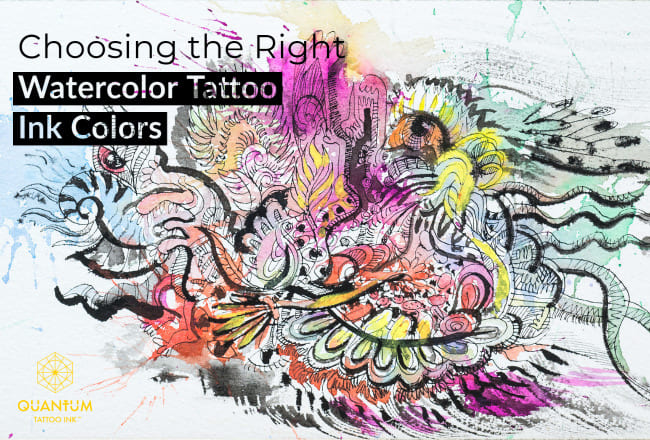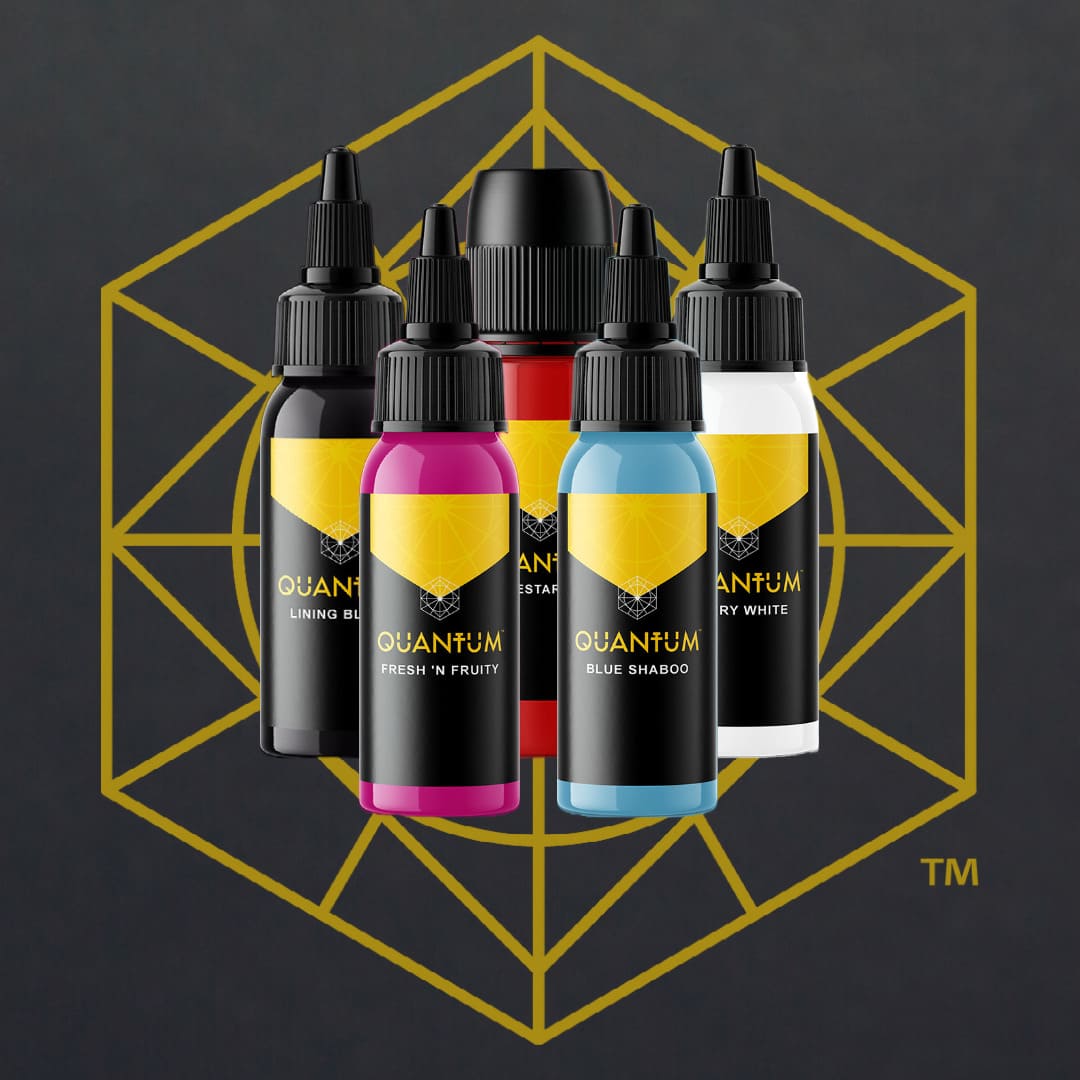Choosing the Right Watercolor Tattoo Ink Colors
Jul 7th 2023

Watercolor tattoos have gained immense popularity in recent years due to their vibrant and artistic appearance. As their name indicates, these tattoos mimic the style of watercolor paintings, using soft lines, delicate shades, and the appearance of flowing brushstrokes.
To achieve the best results for your clients when it comes to watercolor tattoos, it is vital to choose high-quality tattoo ink. In this blog, we'll explore the history of watercolor tattoos, discuss the techniques involved, and provide valuable tips for selecting the perfect watercolor tattoo ink.

History of Watercolor Tattoos
Although both tattooing and watercolor painting have been practiced for centuries, it is not until the last 10 years or so that watercolor tattoos started gaining popularity.
This style breaks away from the traditional bold lines and solid colors of traditional tattoos, incorporating softer hues and blending techniques. With roots in fine art and abstract expressionism, watercolor tattoos offer a more ethereal and dreamy aesthetic.
It is quite a surprise that watercolor tattooing took so long to be recognized and appreciated as its own style considering that throughout the 19th and 20th centuries, watercolor was the most common medium used for flash tattoo sheets.
Yet, no one was using this technique on the skin. This was due, in part, to the availability of tattoo ink colors at the time; which were limited to bold solid colors including black tattoo ink, red tattoo ink, and blue tattoo ink.

Watercolor Tattoo Techniques
To achieve the desired watercolor effect, tattoo artists utilize various techniques with similar aesthetics to watercolor painting. These include stippling, splattering, and layering. These techniques allow artists to create depth, transparency, and texture, that reflect the characteristics of watercolor paintings.
There is controversy among tattoo artists about the use of black tattoo ink in watercolor tattoos. The argument for using black tattoo ink is that the carbon pigment acts as a dam to keep the colors in place. Proponents of black tattoo ink assert that without using it for an outline, the colors will disperse and fade more quickly. On the other hand, many tattoo artists don’t think that black ink is necessary.
They argue that all tattoos will need touchups eventually, even if they have an outline. They feel strongly that a black outline disrupts the watercolor aesthetic of the tattoo. However, many artists have found a happy medium between form and function when it comes to watercolor tattoos. They create a fine-line black underlayer to give the shapes of the tattoo some subtle definition while allowing for the colors to appear transparent.
As far as health and safety are concerned, watercolor tattoos pose the same safety risks as any other type of tattoo. Like with any tattoo, it is important to discuss these risks with your client and give them clear instructions to make sure that they have the smallest risk possible.
Watercolor Tattoo Aging
Regardless of the technique you choose, it is important to remember that while watercolor tattoos can be visually striking, they do tend to fade faster than traditional tattoos due to the lighter pigments used. Some of the cons to watercolor tattoos include potential color fading, loss of detail, and the need for frequent touch-ups to maintain their vibrancy.
However, the aging process can lend a unique charm to these tattoos, resembling the gentle fading of watercolor paintings. The softer appearance, the way the colors blend into the skin, and their watercolor-like patina can all be a draw to those looking for something beautiful and filled with color, but still subtle.
Either way, using high-quality concentrated pigments gives your work a longer lifespan before it begins to fade. Giving your client the benefit of a subtle yet vibrant tattoo with less frequent need for touchups.
Choosing Watercolor Tattoo Pigments
When it comes to watercolor tattoos, the choice of ink plays a crucial role in achieving the desired effect. High-quality pigments and concentrated pigmentation are essential for vibrant and long-lasting watercolor tattoos. For these reasons, Quantum Tattoo Ink stands out as a reliable and popular option known for its high-quality pigments and stringent safety standards. We offer a wide range of colors specifically formulated to be vibrant whether used alone, mixed to create a custom color, or thinned with our Quantum Holy Water Mixing Solution developed specifically for color tattoo inks. Quantum provides artists with excellent options to create stunning and long-lasting watercolor tattoos.

When it comes to watercolor tattoos, some of the most popular colors include pink, red, and blue tattoo in. If you choose to incorporate fine lines into your watercolor tattoo, we also have a black tattoo ink that is ideal for that purpose. If you are looking for vegan tattoo ink, all of these make an outstanding choice.
- Pink Tattoo Ink: When selecting a pink tattoo ink for watercolor tattoos, look for a shade that is highly pigmented and can create soft, translucent layers. This will allow you to achieve a delicate and romantic appearance. While any of our pink tattoo inks can be used for watercolor tattooing, our EU REACH Compliant Gold Label tattoo ink Fresh n’ Fruity stands out as a favorite.
- Red Tattoo Ink: For red tattoo ink, choose shades that are bold and intense. These colors should be able to maintain their vibrancy over time, as red pigments tend to fade more quickly. For a shade that can add red hues to your watercolor tattoo ink, European tattoo artists love our Eu REACH Compliant Gold Label Firestarter, especially for themes involving a firebird or phoenix.
- Blue Tattoo Ink: Blue tattoo ink should be vibrant and able to create the illusion of water or sky. Look for inks that have a good flow and blending capability to capture the fluidity of watercolor. A standout for this purpose is our EU REACH Compliant Gold Label Blue Shaboo.
- White Tattoo Ink: White tattoo ink is often used sparingly in watercolor tattoos to create highlights and add dimension by incorporating areas of opacity. Look for a white tattoo ink that is opaque and can be easily blended with other colors. We recommend EU REACH Compliant Gold Label Barry White for this purpose.
- Black Tattoo Ink: Although not all artists use black tattoo ink in their watercolor tattoos, many like to include delicate outlines to create definition and dimension. Opt for a black tattoo ink that is highly pigmented and developed specifically for lining, like EU REACH Compliant Gold Label Lining Black. This will ensure that you can make even the finest lines smooth.
Key Takeaways
As tattoo artists continue to push the boundaries of creativity, watercolor tattoos remain a popular choice for those seeking a unique and artistic expression of themselves. By combining the skill of tattooing with the beauty of watercolor paintings, this style has carved out its own special place in the world of body art, captivating both artists and individuals who want to wear their artwork on their skin. Watercolor tattoos offer a unique and artistic style that requires careful consideration when it comes to tattoo ink colors. To achieve the best results, choose high-quality inks, such as Quantum Tattoo Ink.
For more tattoo ink tips, news, and product updates, follow us on Instagram or Facebook.

